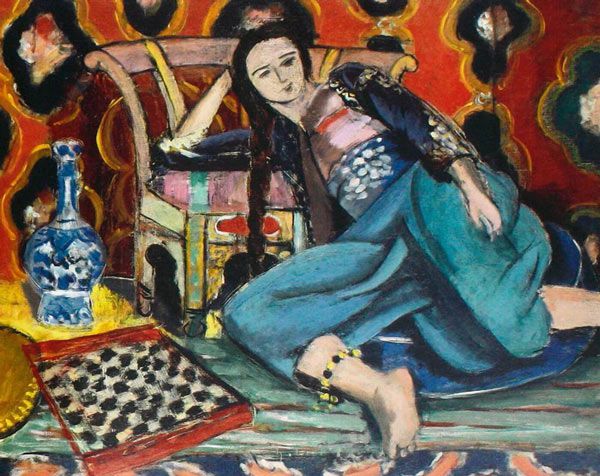
The Guggenheim Bilbao hosts a selection of works from the Musée d'Art Moderne de Paris
Henri Matisse - Odalisque au fauteuil - 1928Fernand Leger - Lhomme a la pipe - 1920
From February 11 to May 22, 2022, the Guggenheim Bilbao presents "From Fauvism to Surrealism. Masterpieces from the Musée d'Art Moderne de Paris", which includes some 70 works on loan from the Musée d'Art Moderne.
Images: Henri Matisse, "Odalisque au fauteuil", 1928 © Paris Musées / Musée d'Art Moderne de Paris © Succession H. Matisse / VEGAP / 2022 ·· Fernand Léger, "L'homme à la pipe", 1920 © Paris Musées / Musée d'Art Moderne de Paris © Fernand Léger, VEGAP, Bilbao, 2022
Organised chronologically, the three rooms dedicated to the exhibition offer a survey of the European avant-garde movements of the early 20th century that had their epicentre in France, which means that visitors may miss works representative of Expressionism or Futurism. In the first room of the exhibition, "Fauvism and Cubism: Scandalously Modern", Fauvism is represented by works by the indispensable Henri Matisse (Odalisque au fauteuil, 1928) and André Derain (La rivière, 1904-05), although there are also paintings by artists less known to the general public, such as Emile Othon Friesz (Automne à Honfleur, 1906). Among the works belonging to Cubism, the most important of the avant-garde, L'homme à la pipe (1920) is an excellent example of Fernand Léger's mature style.
The next room is devoted to the School of Paris, that heterogeneous group of artists, most of them non-French, who settled in Paris at the beginning of the 20th century, living mainly in two districts of the then Parisian suburbs: Montmartre and Montparnasse. The latter was the home of Amedeo Modigliani, the paradigm of the bohemian artist of early 20th century Paris, represented in the exhibition by Femme aux yeux bleus (1918).
The last of the exhibition rooms studies the Evolutions of Surrealism, the most important of the artistic movements to emerge after the First World War, influenced in part by the Dadaist rupture (represented by, among others, Francis Picabia's Optophone II), and the metaphysical painting of Giorgio de Chirico, whose Mélancolie hermétique (1919) is included in the exhibition.
Read the full article

